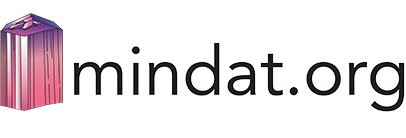
Information for Educators
Mindat.org is an incredibly powerful tool for education about rocks, minerals and the Earth Sciences in general - here are a few tips that may help you and your students get the most from mindat.org. Don't forget to read the manual.
1. Introducing Minerals
You may want to start with this article on what is a mineral?.
This article on the most common minerals on Earth is also targeted at an introductory level.
For younger students a great way to introduce rocks and minerals is to relate real-life rocks and minerals to those found in the popular computer game 'Minecraft' - Read our article on The Rocks and Minerals of Minecraft.
2. Using mineral pages
Some mineral pages, for example quartz, are far more detailed than others, but each mineral page follows a similar structure.
Photos at the top of each page are chosen to be representative of different forms and habits of the species but do concentrate on the best quality crystals of each species. It's important to point out to students that in most cases you won't see the incredible crystal forms that are shown in these examples.
Important properties such as colour, lustre, hardness, specific gravity and crystal system are listed immediately below the photographs - at an introductory level this is all you really need to concentrate on, however there are some areas below that may be of use:
Crystallographic forms
This section contains 3d crystal drawings that can be rotated with the mouse. It's found on most common mineral pages, but not all.
Significant localities
On many common mineral pages we do not list all localities, but only those we have classed as significant. This still can give your students an appreciation of how widely spread these minerals are.
Good questions to ask include:
Why are there few/no localities for this mineral on Antarctica? (answer: because it's very hard to look for them there because of the climate and because of international rules so very few people have been looking.)
Do some minerals seem to be grouped in certain areas? Why is this? (answer: some areas have geology suitable for certain minerals to form, and other areas may not.)
3. Use the glossary
Encourage your students to search for terms they don't understand in our glossary using the glossary search page.
4. Go local
Use the Nearest Locality Search to find the localities nearest to you, or to any other point of interest based on the latitude and longitude. This is a good opportunity to learn about bearings, latitude and longitude, and to understand sites of mineral
5. Minerals and Chemistry
We have a major section on The Chemical Elements and Mineralogy which allows you to show the connections between different chemical elements and the minerals that contain them.
One interesting exercise is to choose an element, such as copper, and look at the list of Element association of Copper in the Mineral World. The last column in this list shows the relative affinity of copper with other elements. Green is frequently found associated with copper in minerals, red not so much. Can you see patterns in this list?
Now, look at the Periodic Table below and click the 'relative frequency' button to plot the data above onto the periodic table. Does this show the relationship better? Try other elements and see how their associations differ.
We'd love to hear other ideas about how mindat.org can be used as a teaching aid, or suggestions about how we can improve the site for this. Please contact Jolyon at jolyon@mindat.org if you have any suggestions.



